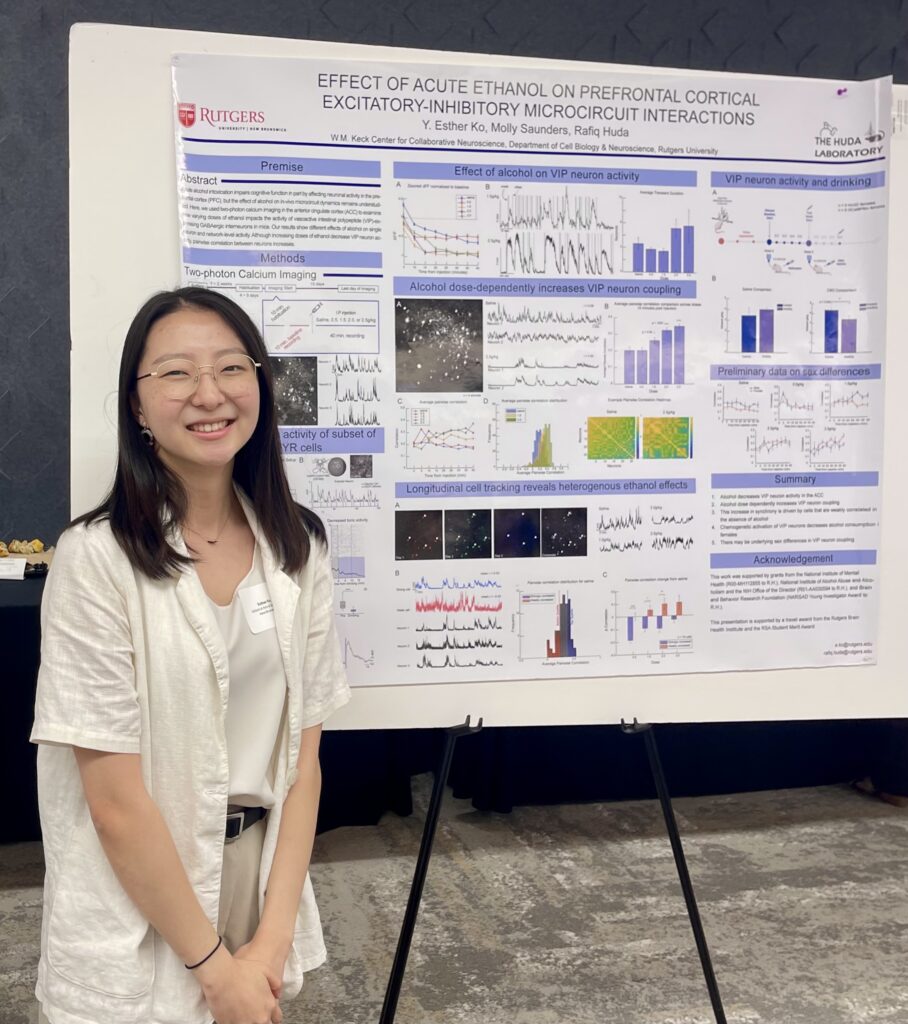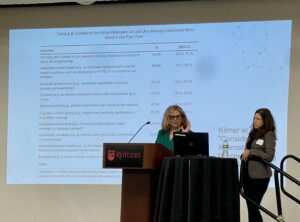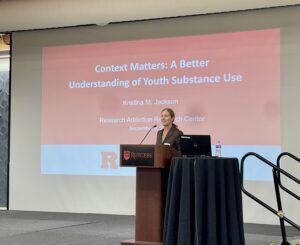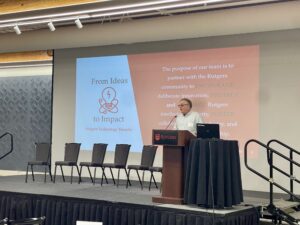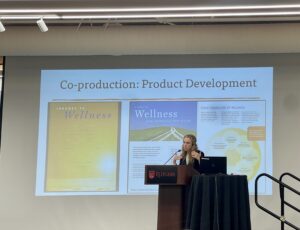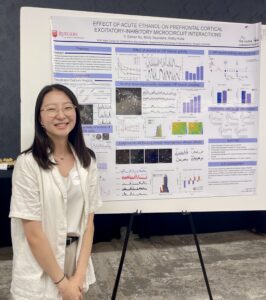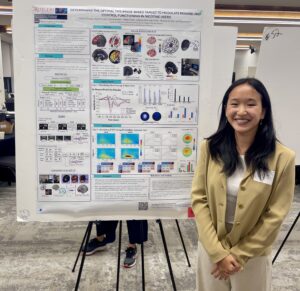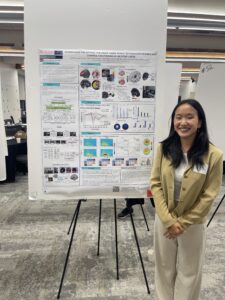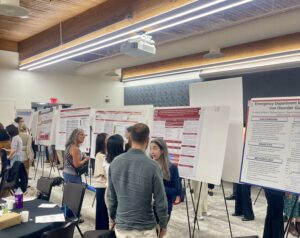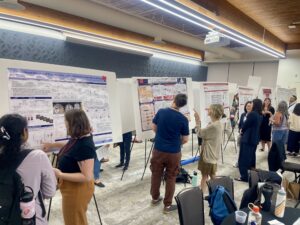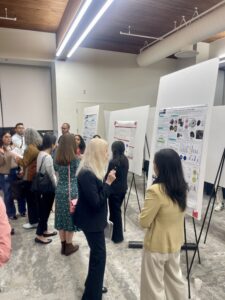Congratulations to the 2024 RARC Fall Symposium Poster Award Winners!
We are excited to announce that Emily Zhang from the Baker Lab for Cognitive Neuroimaging and Stimulation, and Esther Ko from the Huda Lab, have won the top two Best Poster Awards at this year’s Symposium!
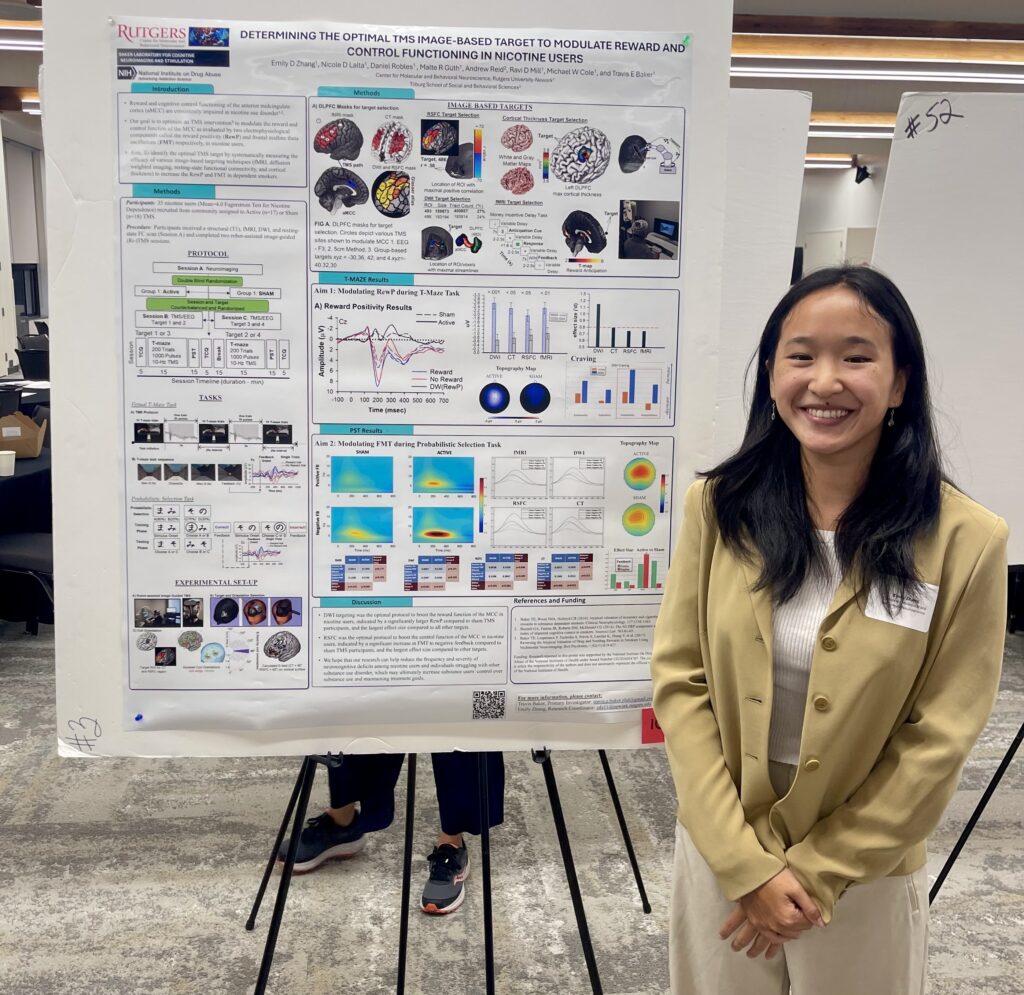
Top Poster in Human Studies:
Title: Determining the Optimal TMS Image-Based Target to Modulate Reward and Control Functioning in Nicotine Users
Authors: Emily Zhang, Nicole Lalta, Daniel Robles, Malte Güth, Ravi D. Mill, Andrew Reid, Michael W. Cole, and Travis E. Baker
PI: Travis E. Baker
Nicotine use disorder can be conceptualized as a failure in cognitive control, and is thought to arise from abnormalities in the reward and control function of the anterior midcingulate cortex (MCC). In this poster, we provide the optimal TMS method for quantifying and modulating the MCC reward (Aim 1) and control function (Aim 2) in nicotine users. In Aim 1, we show that applying TMS over an diffusion-based connectivity target (left prefrontal cortex – MCC) can boost the reward function of the MCC in nicotine users. In Aim 2, we show that applying TMS over an individualized function connectivity-based target (left prefrontal cortex – MCC) can boost the control function of the MCC in nicotine users. The findings from this study may help to develop more precise and effective MCC stimulation protocols according to patients’ structural and functional connectivity profiles and cognitive control deficits.
Top Poster in Animal Studies:
Effect of Acute Ethanol on Prefrontal Cortical Excitatory-Inhibitory Microcircuit Interactions
Authors: Esther Ko and Molly Saunders
PI: Rafiq Huda
Acute alcohol intoxication impairs cognitive function in part by affecting neuronal activity in the prefrontal cortex (PFC), but the effect of alcohol on in-vivo microcircuit dynamics remains understudied. Here, we used two-photon calcium imaging in the anterior cingulate cortex (ACC) to examine how varying doses of ethanol impact the activity of vasoactive intestinal polypeptide (VIP)-expressing GABAergic interneurons in mice. Our results show different effects of alcohol on single neuron and network-level activity. Although increasing doses of ethanol decrease VIP neuron activity, pairwise correlation between neurons increases.
